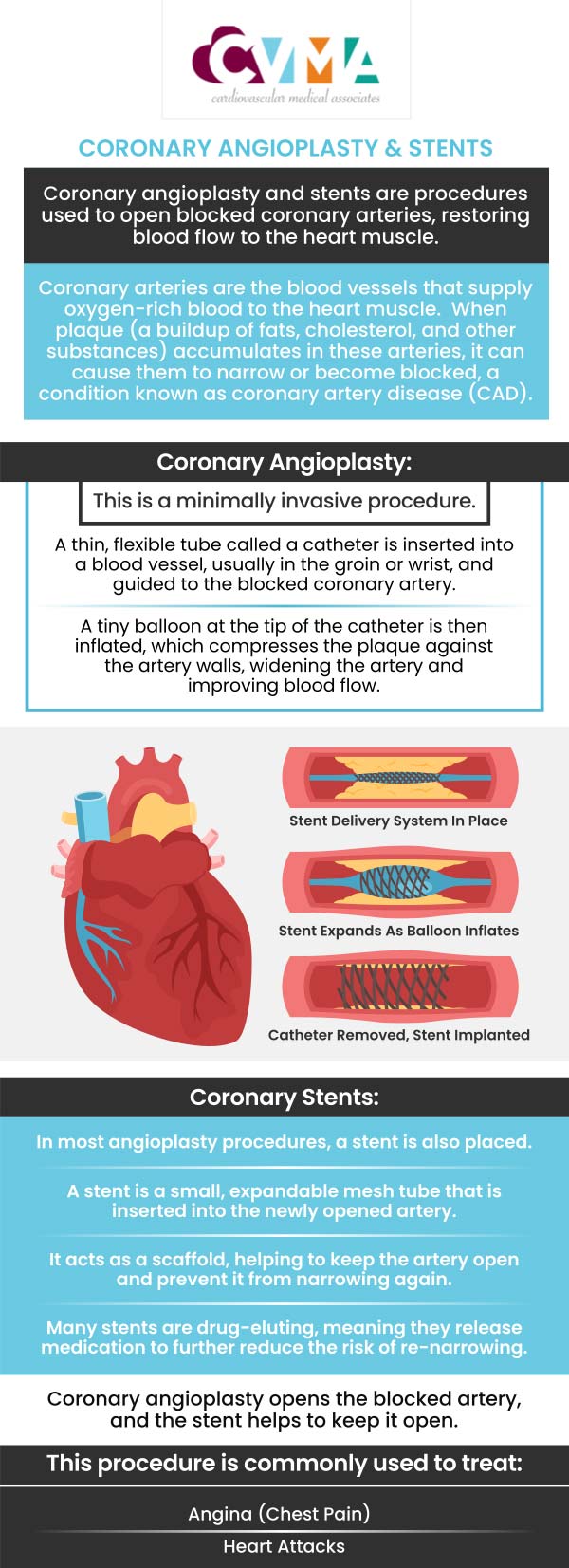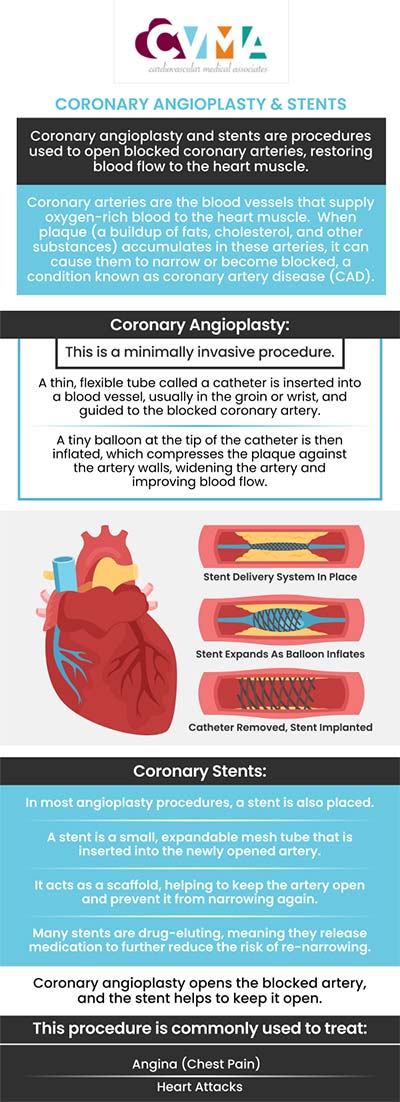Coronary Angioplasty and Stents Procedure Specialist in Downey, CA
A coronary angioplasty is a heart procedure that widens clogged blood vessels using a catheter. It is often followed by the placement of a stent, which helps keep the artery open and prevents the artery from narrowing again. A coronary angioplasty and stent placement can enhance heart muscle blood flow, provide pain relief, reduce breathlessness, increase energy, reduce the risk of heart attacks and strokes, and enhance daily activities. If you want to learn more about coronary angioplasty and stents, consult with our board-certified cardiologists, Kaushal Tamboli, MD FACC, Paiboon Mahaisavariya MD FACC and Paul Yoshino MD. For more information, contact us or book an appointment online. We serve patients from Downey, CA, and surrounding areas.




Table of Contents:
Can angioplasty and stenting be done at the same time?
Is a coronary angioplasty a major surgery?
How long does it take to recover after an angioplasty and stent?
How long does an angioplasty with a stent last?
Yes, angioplasty and stenting can be done together, this process is known as percutaneous coronary intervention and is used in certain medical situations. A coronary angioplasty is a treatment in which a catheter, a narrow tube, is fed through the clogged coronary artery via a puncture to an arm or leg artery. The catheter also has a small, almost balloon-like tip, which is inflated to break up clots in the arteries and improve blood flow to the heart. If you are having a stent placed, this process will happen after the angioplasty treatment is completed, and this is accomplished by placing a wire mesh tube into the artery. This mesh tube is what is known as a stent. Due to the nature of a stent, it will prevent the narrowing of the arteries in the future and keep them open. Many stents do have a medication that coats them, which also improves the likelihood of keeping the artery open.
Due to the nature of the surgery, a coronary angioplasty is not considered a major surgery by medical professionals, as it is minimally invasive compared to a surgery like open heart surgery. Given how common coronary angioplasty is for heart-related issues, the procedure can take 30 minutes to 2 hours to complete. If this surgery is done in a non-emergency situation, you can expect to be released from the hospital within 12-24 hours. If the surgery is done due to the need for an emergency intervention, you can expect to be in the hospital for several days so that medical staff can monitor your recovery and make sure there are no symptoms of complications.
After you have been released from the hospital, you are going to receive medications, wound care instructions, and diet or lifestyle improvements. To have the best outcome and recovery, it is very important to follow the instructions you receive after surgery, as this will mitigate any risks or complications that can arise, and you will also most likely have a follow-up appointment to check on your progress in the following weeks or months.
You may also be sore the days following, and this can be from internal bruising, which is normal after receiving this surgery. The tender feeling will also pass in the days following your surgery, but monitoring the site for signs of injections is also important during your healing process.
If your angioplasty was a planned procedure, you can expect to be able to return to work a week later; however, if your angioplasty and stent were done in an emergency procedure, it could be anywhere from 4 to 16 weeks before you will be recovered enough to return to work.
If your angioplasty and stent were done in an emergency, it is vital to not rush your recovery process and potentially put any unneeded stress on your heart, and to follow your doctors’ limitations regarding strenuous activities until they have said that it is safe to do so.
Because there is a very low risk of narrowing and returning to the area, stents done with angioplasty are considered permanent. The return of narrowing in the area will normally begin to present itself in the 6 to 9 months following the procedure, which is why you will have follow-up appointments in the months following your procedure. The likelihood of narrowing returning is less than 3% and the likelihood of that happening can be lessened to 2% by following your prescribed medications, changing your diet, and improving your health through regular exercise.
There is also no concern about rejection involving stents, as they are not made of living tissues so the body will not try to remove them. There is a very minor risk of blood clots that could form in the first year after your procedure due to the stent, but this is not common, and the risk is normally mitigated by taking your prescribed blood thinners as directed by your doctor.
A coronary angioplasty and stents are procedures that can open congested blood arteries that provide blood to the heart muscle. If you are considering a coronary angioplasty and stents visit our specialists at Cardiovascular Medical Associates. For more information, contact us and book an appointment. We serve patients from Downey CA, Norwalk CA, Lynwood CA, Cerritos CA, Lakewood CA, Whittier CA, and surrounding areas.






